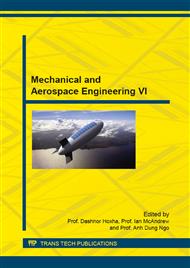p.457
p.462
p.470
p.475
p.480
p.486
p.493
p.500
p.505
Evaluation of the Potential of Fruit Peel Biomass after Conventional and Microwave Drying for Use as Solid Fuel
Abstract:
Searching for new sources of energy in order to minimize the dependence on fossil fuels and also to preserve the environmentmeets thenecessityfor finding effective solutions to the problem of waste generated in different production levels.In juice pulp processing industrylarge volumes of waste are produced daily and can contribute, with its burning, for energy production. Once it is necessary the removal of moisture from the residue, this study evaluate the conventional drying and microwave drying of the biomass generated by peels of orange, mango and passion fruit with initial mean moisture content higher than 75%. The experiments were performed in oven at a temperature of 150°C and the average time for an almost complete withdrawal of peels studied was 130min. For drying by microwave with power of 900W, the average time required for the total reduction in moisture was 8.5min. The drying Page model was adjusted by non-linear regression to data obtained with correlation coefficients in all cases greater than 0.955. The higher heating value was rated equal to 16,25kJ/g, 19,62kJ/g, 16,35kJ/g for the peels of orange, mango and passion fruit, respectively. The average energy consumption for the drying process in the oven was 81,25kJ/gevaporated water and 12,07 kJ/gevaporated waterin the process by microwave, which indicates that drying using microwave is a very interesting option.
Info:
Periodical:
Pages:
480-485
Citation:
Online since:
October 2015
Keywords:
Price:
Сopyright:
© 2015 Trans Tech Publications Ltd. All Rights Reserved
Share:
Citation:


